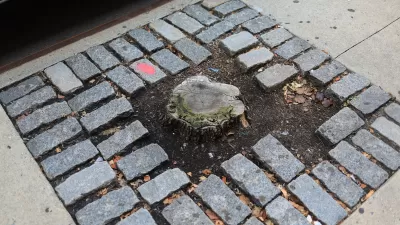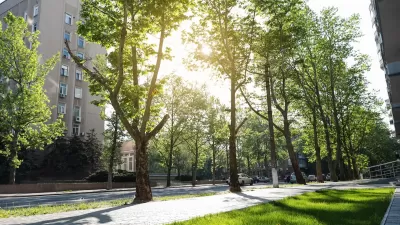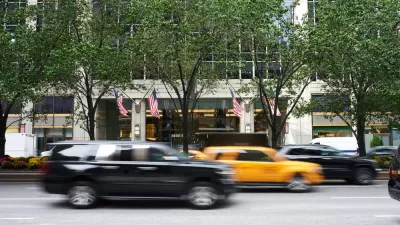Tree planting is a highly visible way to show investment in a community, but without regular maintenance, street trees can become a nuisance rather than a benefit.

An associate professor at North Carolina State University is delving into the long-term impacts of tree planting efforts. Ysabelle Kempe explains: “Smart Cities Dive caught up with Larson to discuss the potential worst outcome of tree-planting efforts, whether trees are inherently valuable to society and why communities in most need of trees may not welcome more.”
Larson points out that “you can’t just put a tree in the ground. You have to nurture it, you have to care for it and maintain it.” Larson explains that, if left unattended, urban trees can quickly die off. Meanwhile, trees, usually viewed as a universal good, can also have negative impacts on communities. “They’re a maintenance issue. They create opportunities for perceived crime in densely forested settings. Sometimes trees fuel property [value] rises and [higher] property taxes, which is a good thing, but it also can catalyze green gentrification, which drives residents out of neighborhoods where they might have been for generations.”
Larson says one obvious solution is “don’t plant trees without public input and community involvement.” For planners or advocates hoping to start tree planting projects, Larson advises, “Take a little bit of time to get to know the place, the key players, and work within their system and the organizations that are based there to make things happen.”
FULL STORY: “Dead trees all over the city”: Where tree-planting efforts go wrong

Planetizen Federal Action Tracker
A weekly monitor of how Trump’s orders and actions are impacting planners and planning in America.

Congressman Proposes Bill to Rename DC Metro “Trump Train”
The Make Autorail Great Again Act would withhold federal funding to the system until the Washington Metropolitan Area Transit Authority (WMATA), rebrands as the Washington Metropolitan Authority for Greater Access (WMAGA).

The Simple Legislative Tool Transforming Vacant Downtowns
In California, Michigan and Georgia, an easy win is bringing dollars — and delight — back to city centers.

The States Losing Rural Delivery Rooms at an Alarming Pace
In some states, as few as 9% of rural hospitals still deliver babies. As a result, rising pre-term births, no adequate pre-term care and "harrowing" close calls are a growing reality.

The Small South Asian Republic Going all in on EVs
Thanks to one simple policy change less than five years ago, 65% of new cars in this Himalayan country are now electric.

DC Backpedals on Bike Lane Protection, Swaps Barriers for Paint
Citing aesthetic concerns, the city is removing the concrete barriers and flexposts that once separated Arizona Avenue cyclists from motor vehicles.
Urban Design for Planners 1: Software Tools
This six-course series explores essential urban design concepts using open source software and equips planners with the tools they need to participate fully in the urban design process.
Planning for Universal Design
Learn the tools for implementing Universal Design in planning regulations.
Smith Gee Studio
City of Charlotte
City of Camden Redevelopment Agency
City of Astoria
Transportation Research & Education Center (TREC) at Portland State University
US High Speed Rail Association
City of Camden Redevelopment Agency
Municipality of Princeton (NJ)





























